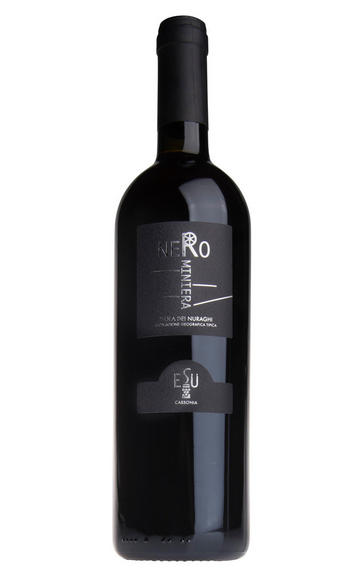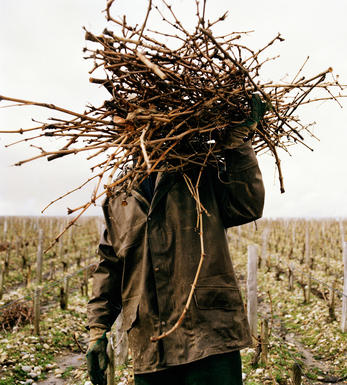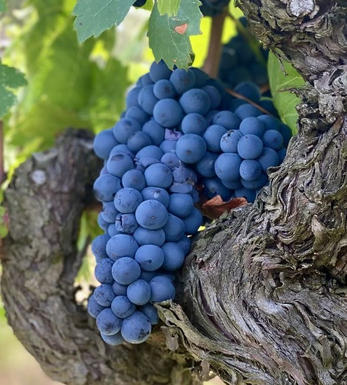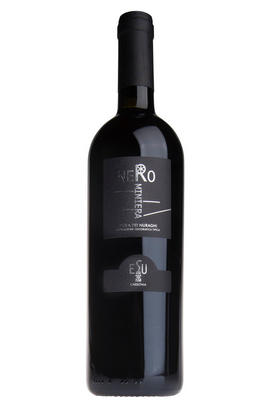
About this WINE

Enrico Esu, Sardinia
In the southern-western corner of Sardinia lie the former coal fields of Carbonia. Closer to the coast the carbon land is covered by sand, and to free-standing, ungrafted, unirrigated Carignano vines that yield a naturally small crop of compact bunches, rich with sweet juice. It’s also home to the Esu family, custodians of Carignano, at their Carbonia estate.
Enrico Esu’s father – whom he refers to as a cross between a farmer and a miner - planted their 10 hectares of Carignano (aka Mazuelo) back in 1958. It’s a grape first propagated by the (Spanish) Bourbons during their four-hundred year occupation of the island between the 14th and 18th century.
Compared to the more commercially, volume driven neighbours reliant on vine clones, the Esu family treasure the original, ungrafted vines and look to perpetuate them on account of their excellent fruit.
Following years of selling the (prized) fruit off, Enrico decided in 2013 to make the switch to bottling the wine under the estate label ‘Nerominiera’, so honouring the presence of the now silent coal mines. Vinified without oak, at the local cantina sociale (cooperative), Enrico made only 5000 bottles of his inaugural bottling’

Carignan
Carignan, as its name suggests, is presumably of Spanish in origin, from around the town of Carineña west of Priorat in the province of Aragon.
Carignan, also known as Carginano in Italy and Cariñena or Mazeulo in Spain, is one of the most widely-planted red grapes in France. Planting became widespread in France during the 1960s, when Algeria gained its independence and was no longer an inexpensive source of red grapes. Languedoc-Rousillon (Cotes du Roussillon, Corbières, Saint Chinian) is the bastion of Carignan in France, and it is also grown Provence, although it now gradually being replaced with more complex and characterful varieties such as Syrah and Grenache.
The berries are blue-black, with fairly thick, astringent skins.Carignan buds and ripens quite late, so it is resistant to spring frosts, but requires a long ripening season and warm climate. It is a vigorous grape, which can result a wine of dull character.
Carignan is useful for adding intense colour, acidity, and fleshy tannins to the archetypal Southern French blends of Syrah, Grenache and Cinsault. Few select growers have managed to produce interesting, distinctive wines from this grape by carefully limiting the vine vigour and the yields.
Old Carignan vines (over 50 years) on a combination of low yields and suitable terroir can produce magnificently concentrated and characterful wine. The best expressions can be found in Priorat.



Buying options
Add to wishlist
Description
New to our wine range, this is a soft juicy Carignano from the Isola dei Nuraghi, better known as the island of Sardinia. On the isle's south-western corner at Carbonia, close to the site of a fomer coal mine ('Nerominiera'), metres from the sea on unsurprisingly sandy soils, is planted ungrafted, free-standing alberello Carignano vines, some of which date back to 1958.
The result is a gorgeous blush red wine, whose nose is a heavenly caress of sunned mulberry/loganberry fruit aromas, a hint of dried grape skins, refreshed by the constant coastal air currents. The medium body is so fleshy with lush mulberry fruit, and a fragrance of dried coastal herbs.
As well as being succulent, as a Sardinian wine it's also sea breezy, culminating in a raspberry 'zing' on the finish! The integrity of the fruit and provenance is captured by the use of only stainless-steel and no oak. A great debut for Enrico Esu.
David Berry Green
wine at a glance
Delivery and quality guarantee